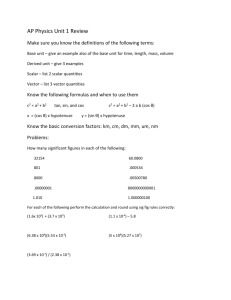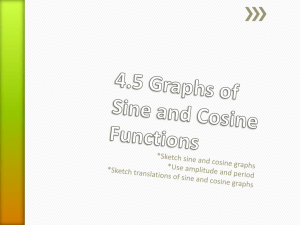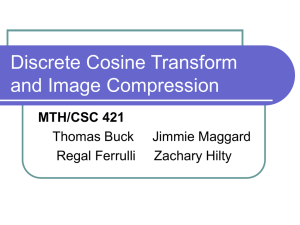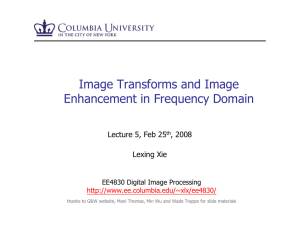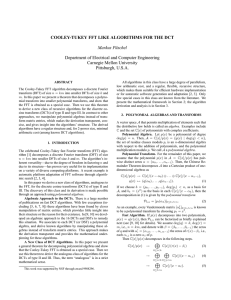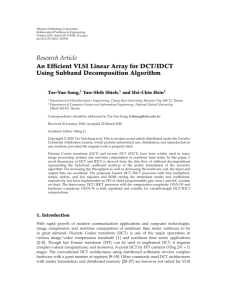ELEN E4810 Digital Signal Processing Final Exam Dan Ellis <>
advertisement
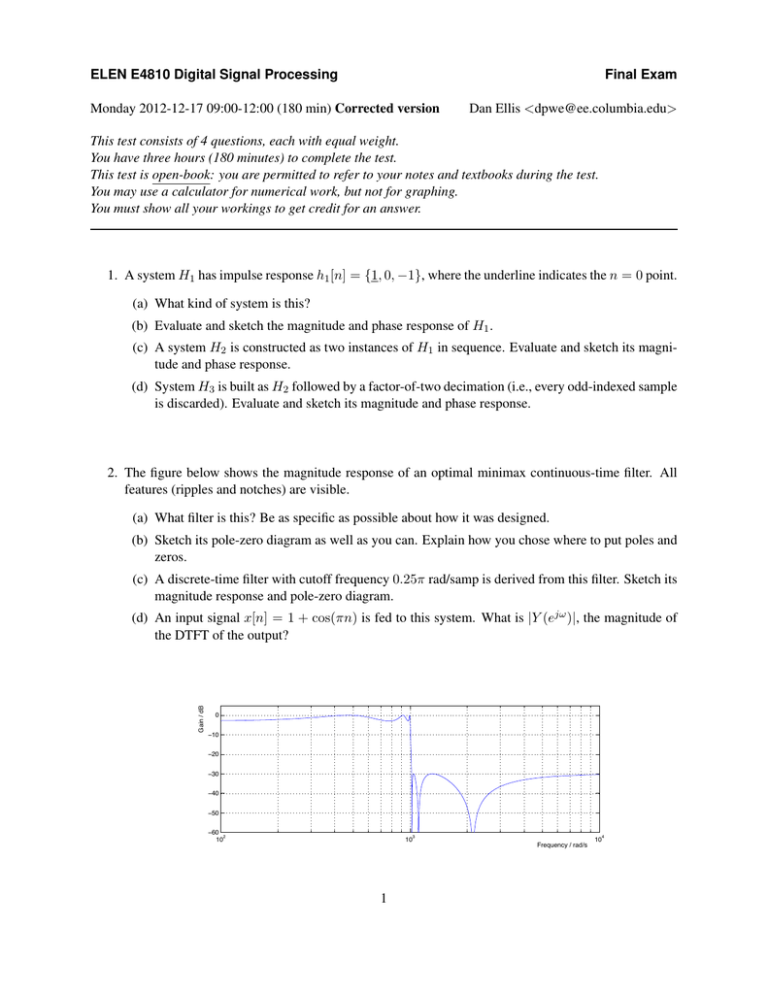
ELEN E4810 Digital Signal Processing
Final Exam
Monday 2012-12-17 09:00-12:00 (180 min) Corrected version
Dan Ellis <dpwe@ee.columbia.edu>
This test consists of 4 questions, each with equal weight.
You have three hours (180 minutes) to complete the test.
This test is open-book: you are permitted to refer to your notes and textbooks during the test.
You may use a calculator for numerical work, but not for graphing.
You must show all your workings to get credit for an answer.
1. A system H1 has impulse response h1 [n] = {1, 0, −1}, where the underline indicates the n = 0 point.
(a) What kind of system is this?
(b) Evaluate and sketch the magnitude and phase response of H1 .
(c) A system H2 is constructed as two instances of H1 in sequence. Evaluate and sketch its magnitude and phase response.
(d) System H3 is built as H2 followed by a factor-of-two decimation (i.e., every odd-indexed sample
is discarded). Evaluate and sketch its magnitude and phase response.
2. The figure below shows the magnitude response of an optimal minimax continuous-time filter. All
features (ripples and notches) are visible.
(a) What filter is this? Be as specific as possible about how it was designed.
(b) Sketch its pole-zero diagram as well as you can. Explain how you chose where to put poles and
zeros.
(c) A discrete-time filter with cutoff frequency 0.25π rad/samp is derived from this filter. Sketch its
magnitude response and pole-zero diagram.
Gain / dB
(d) An input signal x[n] = 1 + cos(πn) is fed to this system. What is |Y (ejω )|, the magnitude of
the DTFT of the output?
0
−10
−20
−30
−40
−50
−60
2
10
3
10
1
4
Frequency / rad/s
10
3.
(a) Express the 4-point DFT as a matrix multiplication, evaluating all constants.
(b) Write expressions for the real and imaginary parts of the outputs, Re{X[k]} and Im{X[k]},
k = 0 . . . 3, in terms of the real and imaginary parts of the inputs, Re{x[n]} and Im{x[n]}.
(c) Draw the structure for an 8-point FFT that includes a first stage of 4-point DFTs. What is the
minimum number of real multiplies that this structure requires? How does it compare to a pure
radix-2 implementation?
4. The Discrete Cosine Transform (DCT) is a transform widely used in data compression (including
JPEG image compression) for its ability to compact energy from a signal with local continuity into a
small number of coefficients. The (N + 1)-point type-I DCT of a sequence x[n], n = 0 . . . N is given
by:
N
−1
X
1
πnk
X[k] = (x[0] + (−1)k x[N ]) +
x[n] cos
for k = 0 . . . N
(1)
2
N
n=1
Note: In the original version of this question, as described in the solutions, the above equation omitted
the plus sign, i.e., it read:
N −1
X
πnk
1
x[n] cos
X[k] = (x[0] + (−1)k x[N ])
2
N
for k = 0 . . . N
(2)
n=1
(a) A 2N -point real sequence y[n], n = −(N −1) . . . N has a 2N -point DFT Y [k], k = 0 . . . 2N −1
that is equal to the DCT X[k] for k = 0 . . . N . Find y[n] in terms of x[n].
(b) What is the DCT of x[n] = cos πrn
N for integer r? (Note: in the original version, it read
x[n] = cos πrn).
(c) Discuss any advantages and disadvantages you see for the DCT as a replacement for the DFT.
2

